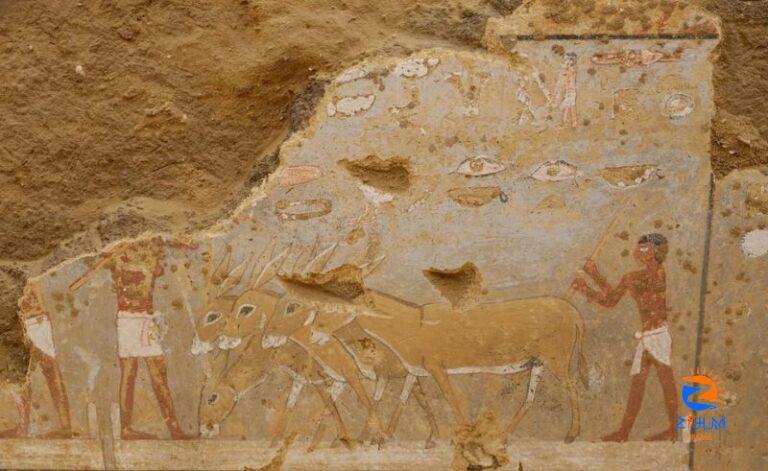
[ad_1]
Egypt’s Ministry of Tourism and Antiquities announced that the Egyptian-German archaeological mission, affiliated with the German Archaeological Institute, uncovered a mastaba dating back to the Old Kingdom era during excavation work in the Dahshur archaeological area.
The Acting Secretary-General of the Supreme Council of Antiquities and Head of the Antiquities Preservation and Registration Sector at the Supreme Council of Antiquities, Hisham al-Leithy, explained that this mastaba is part of the large cemetery of the inhabitants of Dahshur in the Old Kingdom era, which was unearthed in 2002 in cooperation with the Free University of Berlin.
Leithy added that the importance of the mastaba also lies in its eye-catching inscriptions, showcasing scenes from daily life including grain threshing, ships sailing on the Nile River, the market and offering sacrifices, which is rare for Dahshur mastabas.
The head of the mission and former director of the German Archaeological Institute, Stefan Seidlmayer, noted that the mastaba is built of mudbrick and belongs to a person named “Seneb-Neb-Ef” and his wife Idet, dating back to the end of the Fifth Dynasty and the beginning of the Sixth Dynasty (around 2300 BC).
The inscriptions of the tomb show that its owner held several positions in the royal palace in the administration of tenants (Khentiu-She), and his wife bore the titles of Priestess of Hathor and Lady of the Sycamore, he explained.
He stated that the mission has been carrying out excavation work on the same site since 1976.
At first its discoveries focused on the pyramids of King Sneferu from the Old Kingdom and King Amenemhat III from the Middle Kingdom, but excavation work has recently given attention to the tombs of the great statesmen, priests, and administrators who lived in that time.
Among the most significant discoveries of the mission are the tomb of the palace servants from the reign of Amenemhat II (around 1880 BC), the port and lower bridge of the Bent Pyramid, and a ritual garden attached to the Valley Temple.
[ad_2]